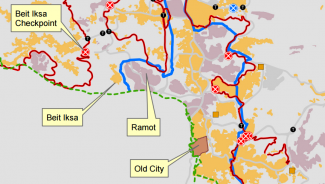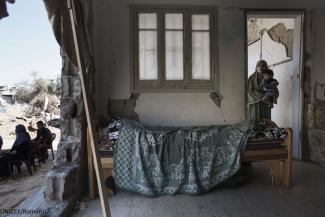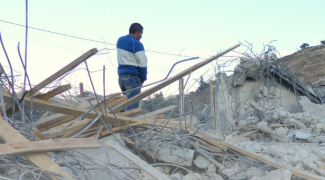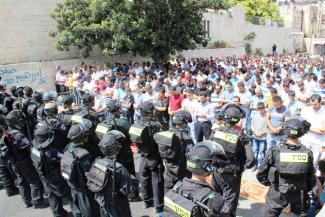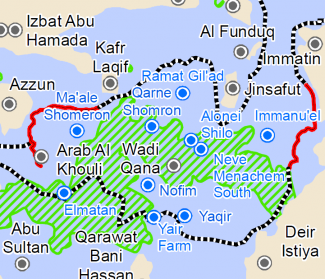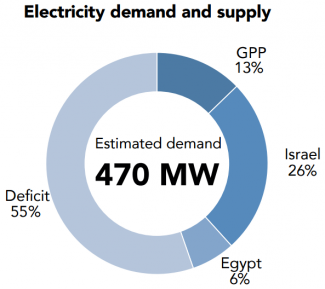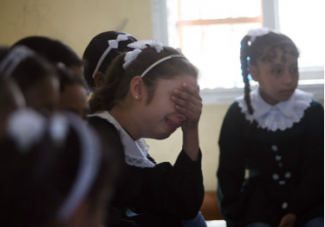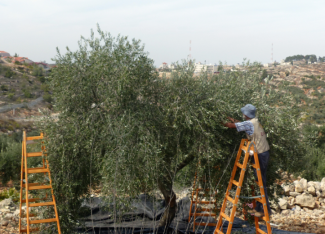Beit Iksa village (pop. 2,000) is located in the north-west of Jerusalem governorate. Although not included within the municipal area of Jerusalem that was unilaterally annexed to Israel following the 1967 war, Beit Iksa initially retained its historic connections to the city. These links have been severed since the early 1990s when Israel began requiring Palestinians who hold West Bank ID cards to obtain permits to enter Israel and East Jerusalem.
The Monthly Humanitarian Bulletin | October 2014
In this document
Palestinian officials fear that the winter months will aggravate the dire humanitarian situation in Gaza and further degrade its fragile infrastructure. During the war some 20,000 homes were destroyed or rendered inhabitable and over 28,000 people remain displaced in shelters (see section on UNRWA Collective Centres), with many others staying with host families.
Levels of tension rose considerably in East Jerusalem during October, reflected in the frequency and intensity of violent clashes, attacks, arrests and demolitions. This trend has raised serious concerns and prompted fears that it may trigger a wider escalation across the occupied Palestinian territory (oPt).
Addressing the immediate needs of those directly impacted by the July-August hostilities in the Gaza Strip remains the most pressing challenge for the humanitarian actors in the oPt. Vulnerable groups include over 20,000 families whose homes were destroyed or severely damaged and are currently displaced, in addition to up to 80,000 families living in houses that have sustained varying degrees of damage. Despite generous pledges by the international community, as well as an agreement on a temporary mechanism for the import of restricted building materials into Gaza, very few families have been able to start reconstruction or repair of their homes.
Recent settlement activities and measures in the Wadi Qana area of Qalqiliya governorate have raised concerns because of their potential impact on already vulnerable Palestinian communities. This area was designated as a nature reserve by the Israeli authorities in the 1980s, resulting in severe restrictions on Palestinian landowners wishing to use the land for farming and grazing. The area of the reserve is surrounded on all sides by ten Israeli settlements, including two unauthorized outposts (El Matan and Alonei Shilo).
Despite emergency repairs to the damage incurred during the latest hostilities, the Gaza Power Plant (GPP) remained shut up to the end of October due to lack of funds to purchase fuel. Consequently, Gaza has remained entirely dependent on the supply of electricity purchased from Israel (120 MW) and Egypt (30 MW); this meets less than a third of the estimated demand. Prolonged outages consisting of cycles of five hours of supply followed by 12 hours of blackouts have remained in place. Even if fuel supplies were delivered, the GPP could only resume operations at half of its full capacity due to the damage incurred to the plant, and the longstanding electricity deficit would only be alleviated to a limited extent.
Nearly 425,000 children in Gaza are in need of immediate psychosocial and child protection support following this summer’s military operation. These include at least 3,373 children injured over the course of hostilities, some of whom will suffer permanent disabilities, more than 1,500 children who were orphaned, and hundreds of thousands who had their homes damaged or had to flee the fighting and move elsewhere, including tens of thousands still displaced. All of them need urgent support from the child protection and broader welfare sectors to regain a sense of normalcy and to deal with acute levels of psychosocial distress and vulnerability at a time when several neighbourhoods and villages of the Gaza Strip still lie in ruins.
During the olive harvest season that officially started this month, Palestinian farmers belonging to seven Bedouin tribes in eastern Bethlehem were permitted to reach their olive groves in the vicinity of Israeli settlements for the first time in over a decade. These farmers live in various nearby localities, including Bethlehem city and the villages of Al A’uqban, Al ‘Asakira and Rakhme. They own land (reportedly about 700 dunums) located in the vicinity of the settlement of Noqedim and the adjacent outposts of El David, Kfar Eldad, Sde Bar and Ma’ale Rehav’am.
